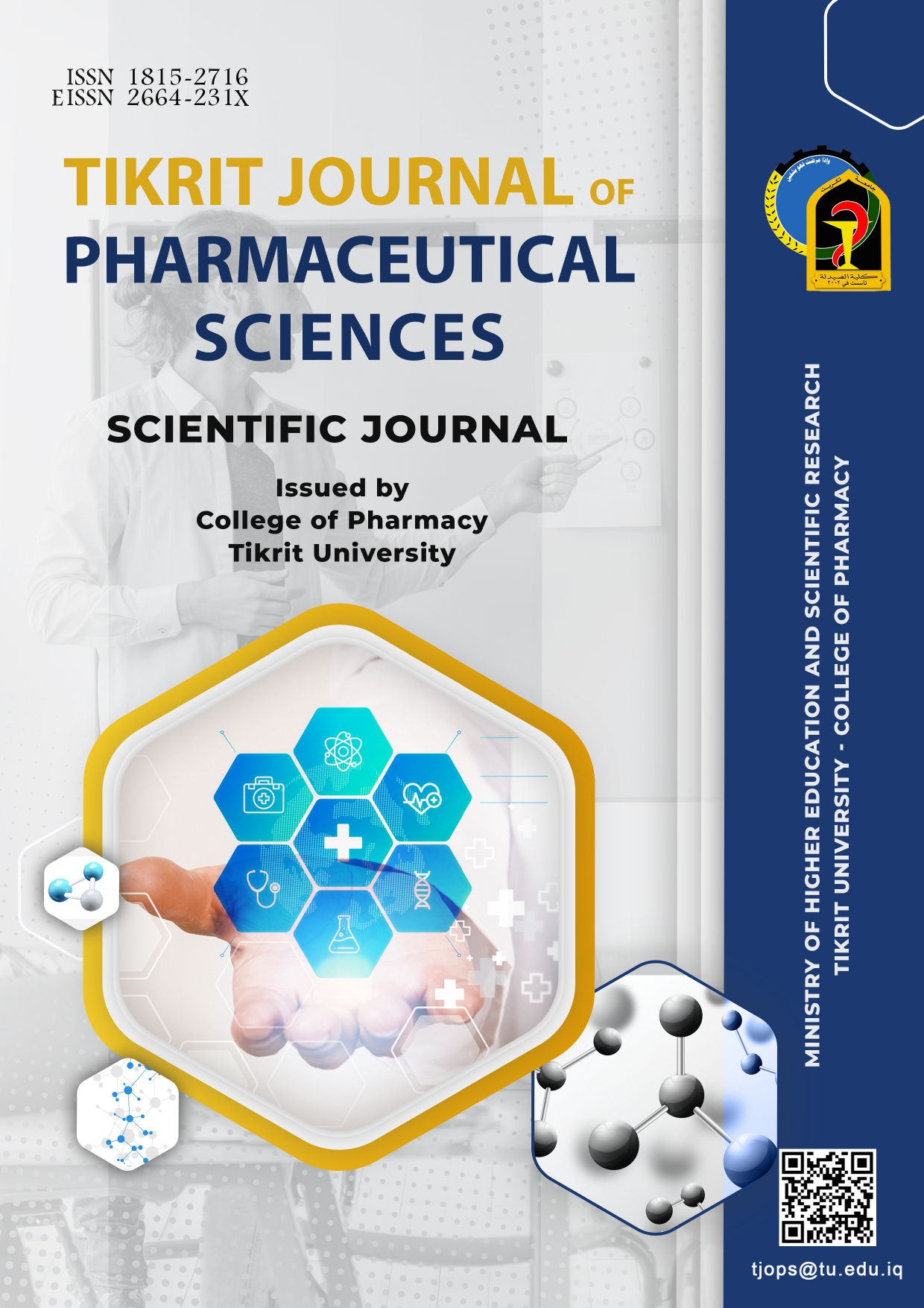Anti-Hepatotoxic Effects of Aqueous and alcoholic Extracts of Tribulus terrestris Fruits and FertiPlus® on Albino Rats Exposed to Sulfasalazine
DOI:
https://doi.org/10.25130/tjphs.2025.19.1.1.1.17Keywords:
Sulfasalazine, Tribulus terrestris, Aqueous extract, Alcoholic extract, Dietary supplements, AST/ALTAbstract
Background: Tribulus terrestris is a medicinal plant traditionally used to treat liver disorders, infertility, and conditions associated with oxidative stress. It contains bioactive compounds such as saponins and flavonoids, which enhance its antioxidant and hepatoprotective properties.
Objective: The present study aimed to evaluate the anti-hepatotoxic effects of aqueous and alcoholic extracts of Tribulus terrestris fruits and a dietary supplement (FertiPlus®) on male albino rats susceptible to sulfasalazine-induced hepatotoxicity (SSZ).
Methods: Thirty-five male albino rats (180–230 g) were divided into five groups. In the first phase (4 weeks), four groups received oral sulfasalazine to induce hepatotoxicity, while one group served as a control. Hepatotoxicity was confirmed by necropsy and biochemical markers. In the second phase (also 4 weeks), the SSZ-exposed groups were treated with either the aqueous extract, the alcoholic extract, or FertiPlus®, while the other infected group was autopsied to detect liver damage (at day 30). Liver enzyme levels (AST and ALT), fat deposition, and liver histology were assessed. Analysis of variance (ANOVA) was used for statistical analysis (P < 0.05).
Results: SSZ administration led to a significant increase in AST and ALT levels and an increase in liver fat deposition, indicating liver damage. Treatment with Tribulus terrestris extracts and FertiPlus® resulted in significant improvements in liver enzyme levels and histological structure. The aqueous extract and FertiPlus® demonstrated the strongest hepatoprotective effects.
Conclusion: Tribulus terrestris extracts, particularly the aqueous extract, and the FertiPlus® supplement demonstrated protective effects against SSZ-induced hepatotoxicity in rats, indicating their therapeutic value in hepatoprotection.
Downloads
Published
How to Cite
Issue
Section
License
Copyright (c) 2025 THIS IS AN OPEN ACCESS ARTICLE UNDER THE CC BY LICENSE http://creativecommons.org/licenses/by/4.0/

This work is licensed under a Creative Commons Attribution 4.0 International License.
This is an open-access journal, and all journal content is available for readers free of charge immediately upon publication.






